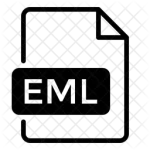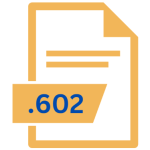.MAILSIGNATURE File Extension

Apple Mail Email Signature
| Developer | Apple |
| Popularity | |
| Category | Text Files |
| Format | .MAILSIGNATURE |
| Cross Platform | Update Soon |
What is an MAILSIGNATURE file?
The .MAILSIGNATURE file extension is associated with Apple Mail, the email client developed by Apple Inc. for its macOS, iOS, and watchOS operating systems.
The .MAILSIGNATURE file is essentially an email signature file used by Apple Mail to append personalized signature details to outgoing emails.
Email signatures are a common feature in many email clients, allowing users to include contact information, a favorite quote, or other relevant details automatically at the end of each email.
More Information.
Originally, email signatures in Apple Mail were more basic in nature, primarily focused on allowing users to include simple text-based information.
As the digital communication landscape evolved, these signature files became more sophisticated, supporting HTML formatting, images, and even links.
The initial purpose of the .MAILSIGNATURE file was to provide a convenient way for users to maintain a consistent and professional appearance in their email communications.
Origin Of This File.
The .MAILSIGNATURE file extension is a product of Apple’s continuous effort to enhance user experience in its email client, Apple Mail.
Apple Mail, initially released in 2001 as part of the Mac OS X operating system, has evolved to include various features aimed at improving functionality and user convenience, with the email signature capability being one of them.
File Structure Technical Specification.
A .MAILSIGNATURE file is essentially a bundle of HTML and plain text. When a signature is created in Apple Mail, it generates this file, storing the signature in both formats.
The HTML component allows for rich formatting, including the use of different fonts, colors, and the inclusion of images. The plain text part ensures compatibility with email clients that do not support HTML formatting.
These files are stored in a specific directory within the user’s Library folder on macOS. The path typically follows the pattern: ~/Library/Mail/V6/MailData/Signatures/, where V6 may vary depending on the version of the Mail app being used.
How to Convert the File?
Converting a .MAILSIGNATURE file to a different format is not a common practice, mainly because these files are specifically designed for use within Apple Mail.
There could be scenarios where you might want to convert or use the contents of a .MAILSIGNATURE file in a different context. Here are some methods to convert or utilize the data in these files:
- Identify File Location: I locate the .MAILSIGNATURE file in the Mail directory within my Mac’s Library folder.
- Open in Text Editor: I use TextEdit on macOS (or Notepad on Windows) to open the .MAILSIGNATURE file.
- Copy Needed Content: I identify and copy either the HTML or plain text part of the signature, depending on my requirement.
- Create New Document: I open a new document in a text editor and paste the copied content.
- Save in Desired Format: I save the new document as either .html or .txt, aligning with the content I copied.
- Use Conversion Tools (if needed): For formats other than HTML or plain text, I use online conversion tools, pasting the HTML content and converting it to my desired format like PDF or DOCX.
- Import Into Other Email Clients: To use the signature in another email client, I paste the HTML code into the new client’s signature editor.
- Convert to Image (if necessary): For an image version, I either take a screenshot of the signature displayed in a browser or use an HTML-to-image conversion tool.
- Be Mindful of Security: I stay cautious about using online converters, especially with personal or business information in the signature.
Advantages And Disadvantages.
Advantages:
- Personalization and Branding: .MAILSIGNATURE files allow users to create personalized signatures that can include branding elements like logos.
- Professionalism: A well-crafted signature can enhance the professionalism of emails.
- Versatility: Supports rich HTML content, enabling more visually appealing signatures.
Disadvantages:
- Compatibility Issues: Some email clients may not properly render HTML signatures, leading to formatting issues.
- Security Concerns: HTML signatures can potentially include malicious code or be used in phishing attacks.
- Complexity: Creating sophisticated HTML signatures may require knowledge of HTML coding.
How to Open MAILSIGNATURE?
Open In Windows
Using a Text Editor:
- Right-click the .MAILSIGNATURE file.
- Choose “Open with” and select a text editor like Notepad or Notepad++.
- You’ll see HTML and plain text. Edit or view as needed.
Using an HTML Editor:
- If you want to view the HTML part with proper formatting, use an HTML editor.
- Open the file with software like Adobe Dreamweaver or a free alternative.
Open In Linux
Using a Text Editor:
- Right-click the .MAILSIGNATURE file.
- Select “Open With” and choose a text editor like Gedit (for GNOME) or Kate (for KDE).
- View or edit the HTML and plain text content.
Using Command Line:
- Open Terminal.
- Use a command-line editor like nano or vim:
nano filename.mailsignatureorvim filename.mailsignature.
Open In MAC
Using Apple Mail:
- Apple Mail automatically recognizes and uses .MAILSIGNATURE files for signatures.
- To edit, go to Mail > Preferences > Signatures.
Using a Text Editor:
- Find the file in Finder, usually in
~/Library/Mail/. - Right-click and select “Open With” > TextEdit (or any other text editor).
Open In Android
Using a Text or HTML Editor App:
- Transfer the .MAILSIGNATURE file to your device.
- Use a file management app to navigate to the file.
- Open the file with a text editor app like QuickEdit or an HTML editor app available on the Google Play Store.
Open In IOS
Using a Text or HTML Editor App:
- Transfer the file to your device via email or cloud storage.
- Use the Files app to locate the file.
- Open the file with a text or HTML editor app available on the App Store.
Open in Others
Using Compatible Software:
- Identify software or apps that can read plain text or HTML content.
- Transfer the .MAILSIGNATURE file to the device.
- Open the file using the chosen software, ensuring it supports the format.













